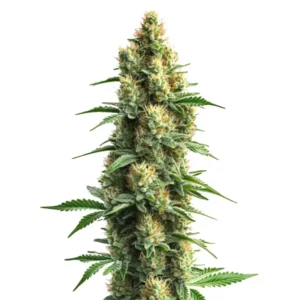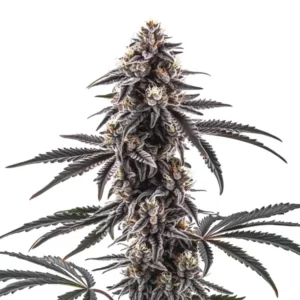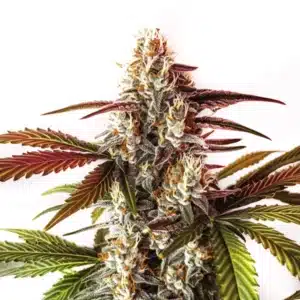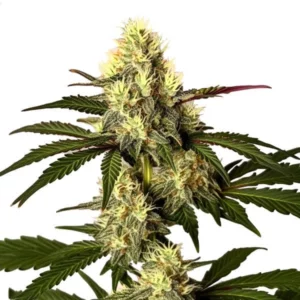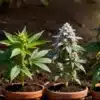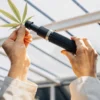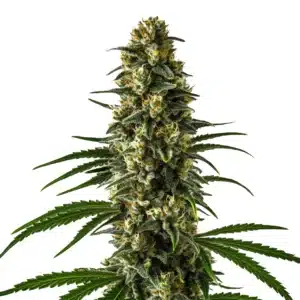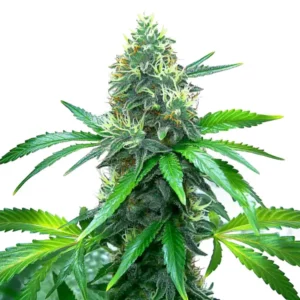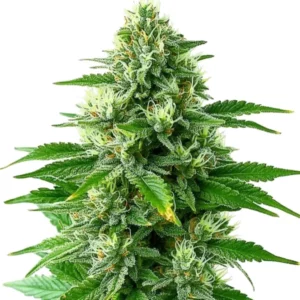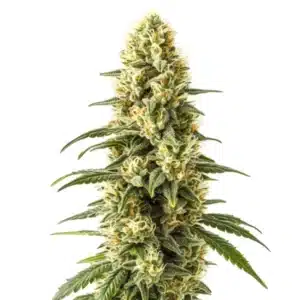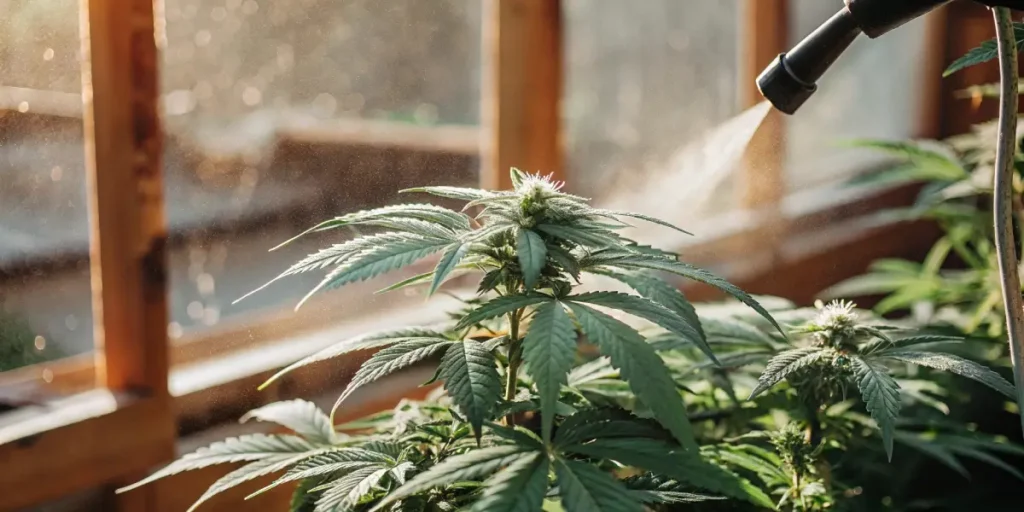
Boosting THC with Plant Hormones
Boosting THC with plant hormones is a hot topic among cannabis growers. If you’re looking to increase the potency of your marijuana plants, knowing how hormones affect THC levels is crucial. Plant hormones, also known as plant growth regulators, can significantly impact the chemical profile of your cannabis plants, leading to higher levels of THC.
Hormones such as gibberellins, cytokinins, and auxins play vital roles in plant development. They can stimulate growth, enhance nutrient uptake, and optimize THC content in marijuana using hormones. By applying the right hormones at the right time, you can enhance cannabis potency through hormone application and get the most out of your plants.
Recommended Strains
Orka
|
|
THC | 20% - 22% (Medium) |
|
|
Type | Feminized |
|
|
Yield | High |
|
|
Phenotype | 40% Indica / 60% Sativa |
Let’s dig into how you can start boosting THC with plant hormones. Whether you’re a first-time grower or a seasoned pro, learning to use these natural chemicals can make all the difference. For instance, the Triple G strain from Blimburn Seeds is known for its high THC content, making it a perfect candidate for hormone application experiments.
Increasing THC Levels in Cannabis with Plant Hormones
Increasing THC levels in cannabis with plant hormones requires a basic knowing of how these natural chemicals work. Gibberellins, for instance, are often used to promote stem elongation but can also influence the production of THC. When used correctly, gibberellins can lead to larger, more potent buds.
Cytokinins, on the other hand, are known for promoting cell division and growth. By using cytokinins as part of your growing regimen, you can encourage the production of more THC-rich flowers. This approach is particularly effective when growing strains like Gelato from Blimburn Seeds, which already has a reputation for high THC levels.
Auxins, another critical group of hormones, help in enhancing the plant’s root system. A robust root system ensures efficient nutrient uptake, which is crucial for THC production. When roots are healthy, the entire plant thrives, leading to increased THC levels. Therefore, auxins are integral to boosting THC with plant hormones.
Incorporating these hormones into your cultivation strategy can result in significant differences in THC potency. The key lies in knowing the specific needs of your cannabis strain and adjusting hormone applications accordingly. By doing so, you can maximize the effectiveness of these natural growth regulators and achieve the desired results.
Using Plant Growth Regulators to Boost THC Production
Plant growth regulators (PGRs) are synthetic or natural compounds that can alter the growth behavior of plants. When aiming to boost THC production, using PGRs can be a game-changer. These substances can enhance the plant’s ability to absorb nutrients, leading to healthier plants with higher THC levels.
PGRs like auxins are particularly effective at promoting root growth. Better roots mean better nutrient uptake, resulting in increased THC levels. When applied during the vegetative stage, auxins can set the foundation for a successful flowering phase. The OG Kush strain from Blimburn Seeds is an excellent candidate for auxin application due to its robust growth characteristics.
To ensure success when using plant growth regulators to boost THC production, it’s important to monitor environmental conditions. Factors such as light, temperature, and humidity play a crucial role in how effectively plants can utilize these hormones. By optimizing these conditions, you can further enhance THC production.
Moreover, integrating PGRs into your cultivation practices should always be done with a focus on sustainability and plant health. Over-reliance on these substances can lead to dependencies, making plants less resilient to environmental stressors. Always aim for a balanced approach to maintain both potency and plant vigor.
Promos & Deals
Optimizing THC Content in Marijuana Using Hormones
Optimizing THC content in marijuana using hormones involves a strategic approach. Timing is everything when it comes to hormone application. For example, applying gibberellins during the early flowering stage can maximize the plant’s THC production potential.
The balance of different hormones is also critical. Combining cytokinins and auxins can lead to synergistic effects, resulting in higher THC levels. This balance is essential for strains like Girl Scout Cookies from Blimburn Seeds, which can reach incredible THC levels when properly managed.
Boosting THC with plant hormones also involves knowing the plant’s life cycle and its hormonal needs at each stage. During the vegetative phase, a focus on auxins and cytokinins can lay a strong foundation for the flowering phase. As the plant transitions to flowering, a shift towards gibberellins can optimize THC output.
Using data and observations from previous growing cycles can help refine your hormone application strategy. Every strain may respond differently, and keeping detailed records can guide future decisions, ensuring that hormone applications are always optimized for maximum THC production.
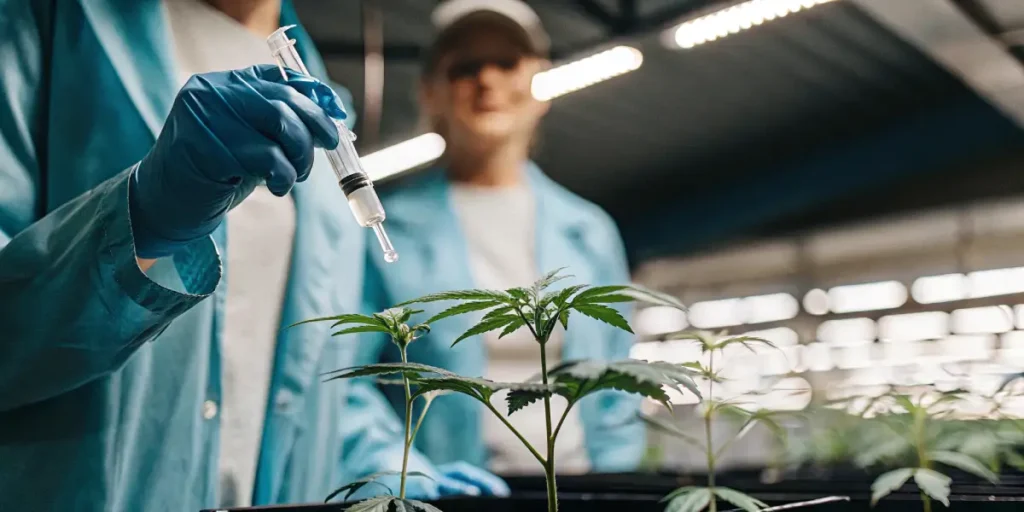
Effects of Plant Hormones on Cannabis THC Levels
The effects of plant hormones on cannabis THC levels are profound. Hormones can dictate how a plant grows, how it absorbs nutrients, and ultimately, how much THC it produces. By knowing these effects, growers can tailor their cultivation practices to maximize THC output.
For instance, gibberellins can increase the size of the plant and its buds, indirectly boosting THC levels. Cytokinins, on the other hand, can promote the growth of additional flowering sites, leading to more THC-rich buds. Therefore, a well-planned hormone regimen can significantly enhance your harvest.
While boosting THC with plant hormones, it is crucial to consider the long-term health of the plant. Overuse can lead to hormonal imbalances, which can affect not only THC levels but also the overall quality of the buds. Thus, maintaining a balanced approach is essential for sustainable cultivation.
Additionally, knowing the effects of plant hormones on cannabis THC levels requires continuous learning and adaptation. As new strains are developed and environmental conditions change, the function of hormones may evolve, requiring growers to stay informed and flexible in their practices.
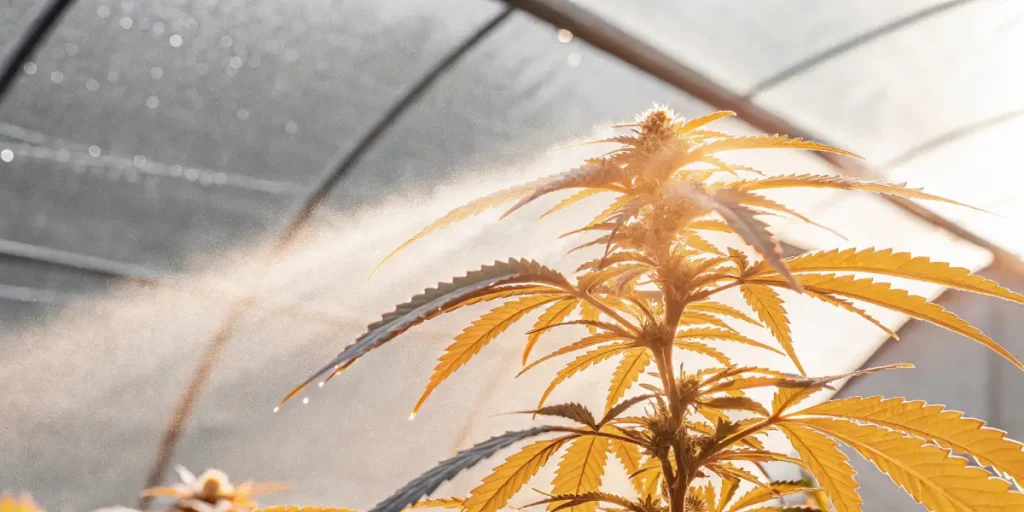
FAQs on Boosting THC with Plant Hormones
What are the best plant hormones for boosting THC?
The best plant hormones for boosting THC include gibberellins, cytokinins, and auxins. Gibberellins are great for promoting growth and increasing bud size, while cytokinins encourage cell division and flower production. Auxins support root growth and nutrient uptake, which are essential for higher THC levels.
Each of these hormones plays a unique role. Gibberellins can be particularly effective during the early flowering stage, while cytokinins are best applied during vegetative growth. Auxins, with their root-boosting properties, are useful throughout the plant’s life cycle. Choosing the right hormone depends on the specific needs of your cannabis strain.
Experimentation and observation are key when determining the best plant hormones for your specific cultivation goals. Different strains may react differently to hormone applications, necessitating a tailored approach to achieve optimal results in THC production.
Additionally, combining hormone treatments with other cultivation techniques such as soil management, lighting, and nutrient scheduling can further enhance cannabis potency through hormone application. The interplay of these factors can significantly influence THC levels, making a holistic approach imperative.
How do plant hormones affect THC levels in cannabis?
Plant hormones affect THC levels by influencing the plant’s growth and metabolism. Hormones like gibberellins can enhance bud size and density, leading to higher concentrations of THC. Cytokinins promote the development of additional flowering sites, each capable of producing THC-rich buds.
Auxins improve root development, enhancing nutrient and water uptake. This, in turn, supports overall plant health and boosts THC production. By carefully managing hormone levels, growers can optimize THC content and achieve more potent cannabis.
Monitoring the plant’s response to hormone treatments is critical in knowing how plant hormones affect THC levels in cannabis. Observing changes in growth patterns and bud development can provide insights into the effectiveness of your hormone regimen.
A balanced approach, considering both the benefits and potential drawbacks of hormone applications, is essential. Avoiding overuse and ensuring that hormone levels are tailored to the specific needs of your plants can prevent negative outcomes and support desired THC levels.
Are there risks associated with using plant hormones?
Yes, there are risks associated with using plant hormones. Over-application can lead to imbalances, causing stunted growth or reduced THC levels. It’s important to follow recommended dosages and monitor your plants closely for any signs of stress or unusual growth patterns.
Using plant growth regulators should be done with caution. While they can significantly boost THC levels, misuse can harm your plants. Always research and apply hormones carefully to avoid negative outcomes.
Knowing the potential risks associated with boosting THC with plant hormones is crucial for maintaining plant health. Over-reliance on hormones can lead to negative side effects, such as altered plant morphology or reduced terpene profiles, which are important for the overall cannabis experience.
Educating oneself on the safe and effective use of hormones, perhaps through reputable sources or consultations with experienced growers, can minimize risks and enhance outcomes. Maintaining a focus on plant health as a priority can lead to successful and sustainable cultivation practices.
Can all cannabis strains benefit from hormone application?
Not all cannabis strains will equally benefit from hormone application. Some strains, like those available at Blimburn Seeds, are naturally predisposed to high THC levels and may respond more positively to hormone treatments. Others may have different growth characteristics that require tailored approaches.
Experimentation is key. Start with small doses and observe how your plants react. Each strain has unique needs, and knowing these can help you make the most of hormone applications. Always consider the specific requirements of the strain you are growing.
Boosting THC with plant hormones can be particularly effective for strains that already exhibit strong growth and potency characteristics. However, for strains with different growth patterns, a customized approach may be necessary to achieve the desired results.
Researching the genetic background and growth traits of specific strains can provide valuable insights into their potential response to hormone applications. By tailoring your approach and being attentive to the unique needs of each strain, you can maximize the benefits of hormone use in cannabis cultivation.
Where can I find reliable cannabis strains for THC boosting?
Blimburn Seeds offers a variety of cannabis strains known for their high THC potential. Strains like Triple G, Gelato, and OG Kush are excellent choices for growers looking to experiment with hormone application for THC boosting.
Each of these strains has unique characteristics that can be enhanced through strategic hormone use. By choosing reliable strains and applying the right hormones, you can maximize your cannabis crop’s potency and quality.
When seeking to boost THC production through hormone application, selecting strains with a proven track record for high potency can provide a solid foundation. These strains, combined with effective hormone strategies, can yield impressive results in terms of THC content.
Furthermore, partnering with reputable seed providers ensures access to quality genetics, which is a crucial component of successful cultivation. High-quality seeds, combined with informed hormone use, can lead to superior cannabis crops with enhanced potency and desirable characteristics.


